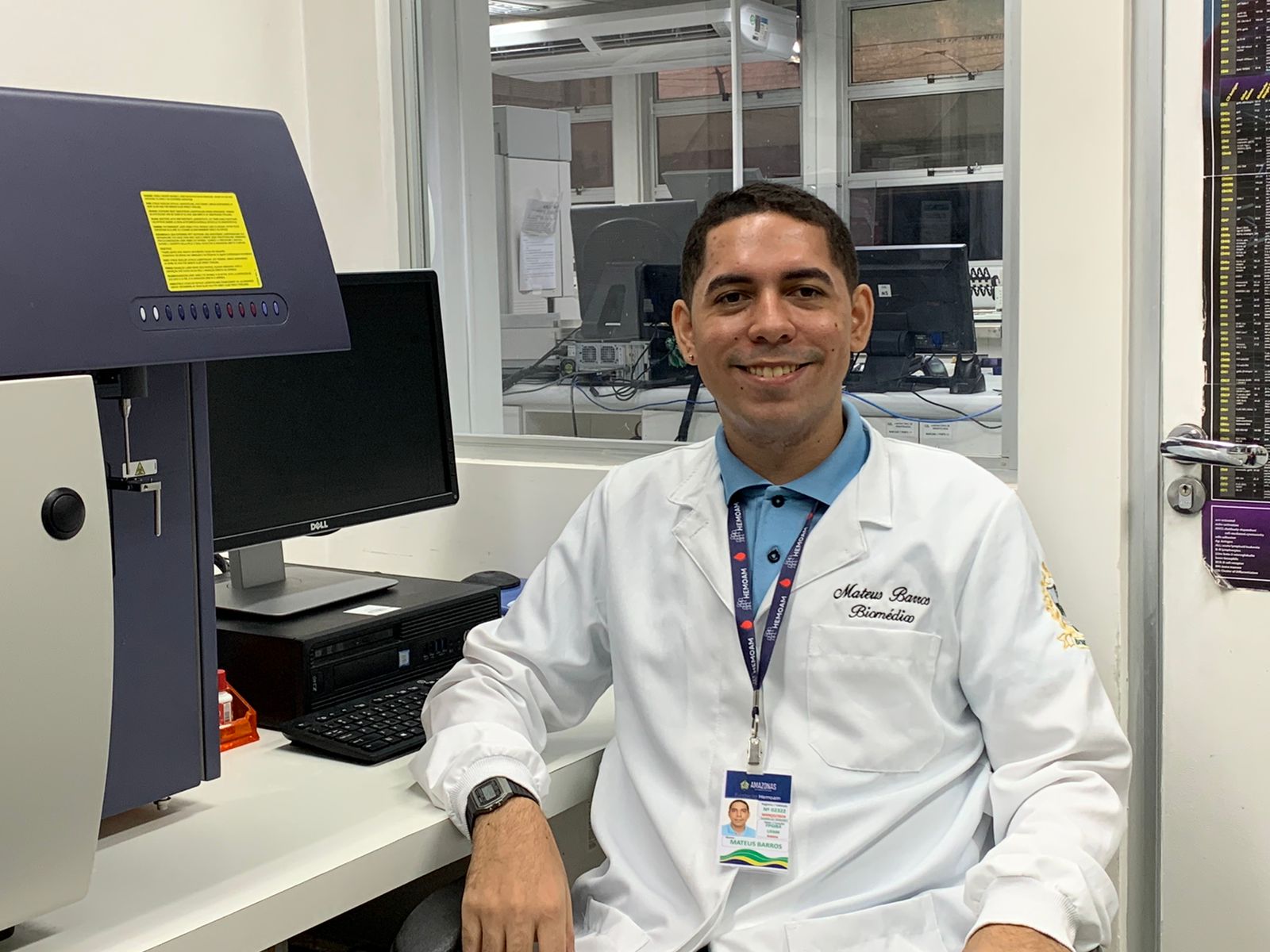Mateus Souza-Barros
Verified @gmail.com
MSc Student at ICB-UFAM and Student Researcher at HEMOAM
Instituto de Ciências Biológicas, Universidade Federal do Amazonas - ICB/UFAM; Fundação Hospitalar de Hematologia e Hemoterapia do Amazonas - HEMOAM
EDUCATION
B.S. in Biomedical Sciences (2018-2021);
Master's Student (2022-2024)
RESEARCH, TEACHING, or OTHER INTERESTS
Cancer Research, Immunology, Hematology, Oncology
Scopus Publications
Scholar Citations
Scholar h-index
Scholar i10-index
Scopus Publications
Flavio Souza Silva, Amanda Barros-Lima, Mateus Souza-Barros, Juniel Assis Crespo-Neto, Vitória Giovanna Rodrigues Santos, Daniele Sá Pereira, Fabíola Silva Alves-Hanna, Fábio Magalhães-Gama, Jerusa Araújo Quintão Arantes Faria, and Allyson Guimarães Costa
Elsevier BV
Fábio Magalhães-Gama, Fabíola Silva Alves-Hanna, Nilberto Dias Araújo, Mateus Souza Barros, Flavio Souza Silva, Claudio Lucas Santos Catão, Júlia Santos Moraes, Izabela Cabral Freitas, Andréa Monteiro Tarragô, Adriana Malheiro,et al.
Frontiers Media SA
The leukemic microenvironment has a high diversity of immune cells that are phenotypically and functionally distinct. However, our understanding of the biology, immunology, and clinical implications underlying these cells remains poorly investigated. Among the resident immune cells that can infiltrate the leukemic microenvironment are myeloid cells, which correspond to a heterogeneous cell group of the innate immune system. They encompass populations of neutrophils, macrophages, and myeloid-derived suppressor cells (MDSCs). These cells can be abundant in different tissues and, in the leukemic microenvironment, are associated with the clinical outcome of the patient, acting dichotomously to contribute to leukemic progression or stimulate antitumor immune responses. In this review, we detail the current evidence and the many mechanisms that indicate that the activation of different myeloid cell populations may contribute to immunosuppression, survival, or metastatic dissemination, as well as in immunosurveillance and stimulation of specific cytotoxic responses. Furthermore, we broadly discuss the interactions of tumor-associated neutrophils and macrophages (TANs and TAMs, respectively) and MDSCs in the leukemic microenvironment. Finally, we provide new perspectives on the potential of myeloid cell subpopulations as predictive biomarkers of therapeutical response, as well as potential targets in the chemoimmunotherapy of leukemias due to their dual Yin-Yang roles in leukemia.
Mateus de Souza Barros, Nilberto Dias de Araújo, Fábio Magalhães-Gama, Thaís Lohana Pereira Ribeiro, Fabíola Silva Alves Hanna, Andréa Monteiro Tarragô, Adriana Malheiro, and Allyson Guimarães Costa
Frontiers Media SA
Recently, many discoveries have elucidated the cellular and molecular diversity in the leukemic microenvironment and improved our knowledge regarding their complex nature. This has allowed the development of new therapeutic strategies against leukemia. Advances in biotechnology and the current understanding of T cell-engineering have led to new approaches in this fight, thus improving cell-mediated immune response against cancer. However, most of the investigations focus only on conventional cytotoxic cells, while ignoring the potential of unconventional T cells that until now have been little studied. γδ T cells are a unique lymphocyte subpopulation that has an extensive repertoire of tumor sensing and may have new immunotherapeutic applications in a wide range of tumors. The ability to respond regardless of human leukocyte antigen (HLA) expression, the secretion of antitumor mediators and high functional plasticity are hallmarks of γδ T cells, and are ones that make them a promising alternative in the field of cell therapy. Despite this situation, in particular cases, the leukemic microenvironment can adopt strategies to circumvent the antitumor response of these lymphocytes, causing their exhaustion or polarization to a tumor-promoting phenotype. Intervening in this crosstalk can improve their capabilities and clinical applications and can make them key components in new therapeutic antileukemic approaches. In this review, we highlight several characteristics of γδ T cells and their interactions in leukemia. Furthermore, we explore strategies for maximizing their antitumor functions, aiming to illustrate the findings destined for a better mobilization of γδ T cells against the tumor. Finally, we outline our perspectives on their therapeutic applicability and indicate outstanding issues for future basic and clinical leukemia research, in the hope of contributing to the advancement of studies on γδ T cells in cancer immunotherapy.
Nilberto Dias de Araújo, Fábio Magalhães Gama, Mateus de Souza Barros, Thaís Lohana Pereira Ribeiro, Fabíola Silva Alves, Lilyane Amorim Xabregas, Andréa Monteiro Tarragô, Adriana Malheiro, and Allyson Guimarães Costa
Hindawi Limited
Recently, cell-mediated immune response in malignant neoplasms has become the focus in immunotherapy against cancer. However, in leukemia, most studies on the cytotoxic potential of T cells have concentrated only on T cells that recognize peptide antigens (Ag) presented by polymorphic molecules of the major histocompatibility complex (MHC). This ignores the great potential of unconventional T cell populations, which include gamma-delta T cells (γδ), natural killer T cells (NKT), and mucosal-associated invariant T cells (MAIT). Collectively, these T cell populations can recognize lipid antigens, specially modified peptides and small molecule metabolites, in addition to having several other advantages, which can provide more effective applications in cancer immunotherapy. In recent years, these cell populations have been associated with a repertoire of anti- or protumor responses and play important roles in the dynamics of solid tumors and hematological malignancies, thus, encouraging the development of new investigations in the area. This review focuses on the current knowledge regarding the role of unconventional T cell populations in the antitumor immune response in leukemia and discusses why further studies on the immunotherapeutic potential of these cells are needed.
RECENT SCHOLAR PUBLICATIONS
MOST CITED SCHOLAR PUBLICATIONS
Publications

